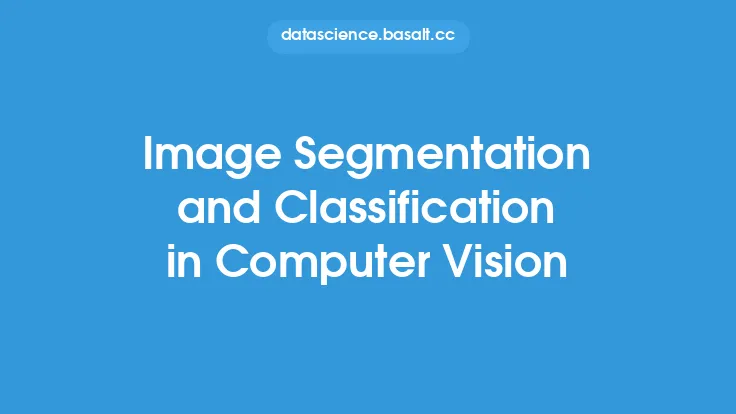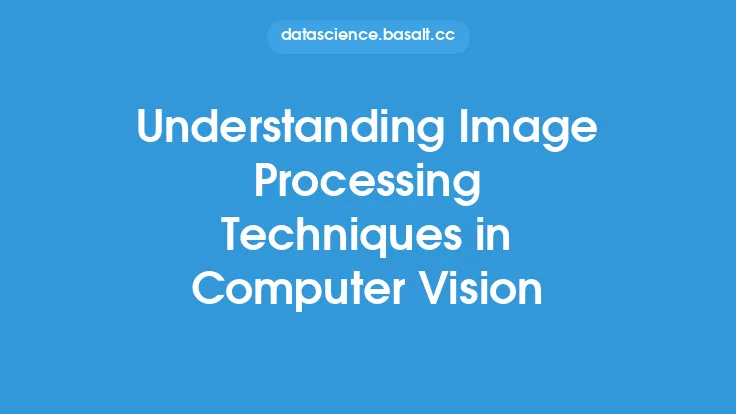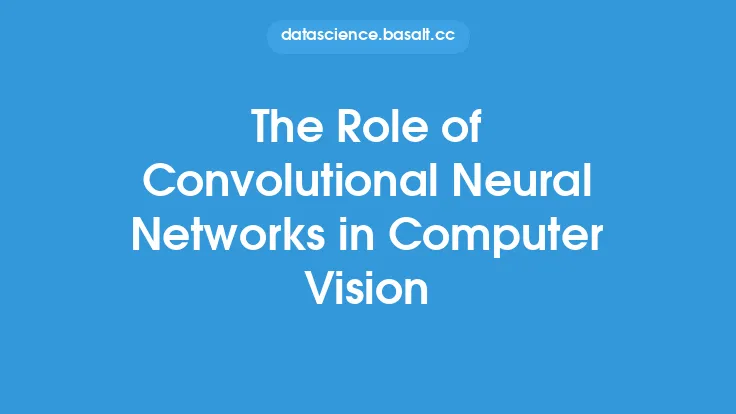Object detection and recognition are fundamental tasks in computer vision, enabling machines to locate, classify, and understand objects within images or videos. This capability has numerous applications, including surveillance, robotics, autonomous vehicles, and medical imaging. The goal of object detection is to identify the location and extent of objects of interest, while object recognition aims to classify these objects into predefined categories.
Introduction to Object Detection
Object detection involves locating objects of interest within an image or video, typically by drawing bounding boxes around them. This task is challenging due to variations in object appearance, pose, scale, and illumination. Traditional object detection methods relied on hand-crafted features, such as edges, corners, and textures, which were then fed into machine learning algorithms for classification. However, with the advent of deep learning, object detection has become more accurate and efficient. Convolutional neural networks (CNNs) have become the backbone of modern object detection systems, leveraging their ability to learn features from raw images.
Object Recognition Techniques
Object recognition is a more complex task than object detection, as it requires not only locating objects but also classifying them into specific categories. Object recognition techniques can be broadly categorized into two types: feature-based and deep learning-based methods. Feature-based methods extract hand-crafted features from images, such as shape, color, and texture, and then use machine learning algorithms to classify these features. Deep learning-based methods, on the other hand, use CNNs to learn features from images and classify them directly. Some popular object recognition techniques include support vector machines (SVMs), k-nearest neighbors (k-NN), and random forests.
Deep Learning Architectures for Object Detection and Recognition
Several deep learning architectures have been proposed for object detection and recognition, including YOLO (You Only Look Once), SSD (Single Shot Detector), Faster R-CNN (Region-based Convolutional Neural Networks), and RetinaNet. These architectures differ in their approach to object detection, with some using a single neural network to predict object locations and classes, while others use a two-stage approach, where the first stage generates region proposals and the second stage classifies these proposals. YOLO, for example, uses a single neural network to predict object locations and classes, while Faster R-CNN uses a two-stage approach, where the first stage generates region proposals using a region proposal network (RPN) and the second stage classifies these proposals using a Fast R-CNN network.
Challenges in Object Detection and Recognition
Object detection and recognition are challenging tasks due to various factors, including occlusion, pose variation, scale variation, and illumination changes. Occlusion occurs when objects are partially or fully hidden by other objects, making it difficult to detect and recognize them. Pose variation refers to changes in the orientation and viewpoint of objects, which can affect their appearance and make recognition more challenging. Scale variation occurs when objects appear at different sizes, making it difficult to detect and recognize them. Illumination changes can also affect object appearance, making recognition more challenging.
Evaluation Metrics for Object Detection and Recognition
The performance of object detection and recognition systems is typically evaluated using metrics such as precision, recall, average precision (AP), and mean average precision (mAP). Precision measures the number of true positives (correctly detected and recognized objects) divided by the total number of detected objects. Recall measures the number of true positives divided by the total number of actual objects. AP measures the average precision at different recall levels, while mAP measures the average AP across all classes.
Real-World Applications of Object Detection and Recognition
Object detection and recognition have numerous real-world applications, including surveillance, robotics, autonomous vehicles, medical imaging, and quality control. In surveillance, object detection and recognition can be used to detect and track people, vehicles, and other objects of interest. In robotics, object detection and recognition can be used to enable robots to interact with and manipulate objects in their environment. In autonomous vehicles, object detection and recognition are critical for detecting and responding to pedestrians, vehicles, and other obstacles. In medical imaging, object detection and recognition can be used to detect and diagnose diseases, such as tumors and fractures.
Future Directions in Object Detection and Recognition
The field of object detection and recognition is rapidly evolving, with new architectures and techniques being proposed regularly. Some future directions in object detection and recognition include the use of attention mechanisms, graph neural networks, and transfer learning. Attention mechanisms can be used to focus on specific regions of interest in images, while graph neural networks can be used to model relationships between objects. Transfer learning can be used to leverage pre-trained models and fine-tune them for specific object detection and recognition tasks.
Conclusion
Object detection and recognition are fundamental tasks in computer vision, enabling machines to locate, classify, and understand objects within images or videos. While significant progress has been made in these areas, there are still many challenges to be addressed, including occlusion, pose variation, scale variation, and illumination changes. Deep learning architectures, such as YOLO, SSD, Faster R-CNN, and RetinaNet, have become the backbone of modern object detection and recognition systems, offering high accuracy and efficiency. As the field continues to evolve, we can expect to see new architectures and techniques being proposed, enabling even more accurate and efficient object detection and recognition systems.





